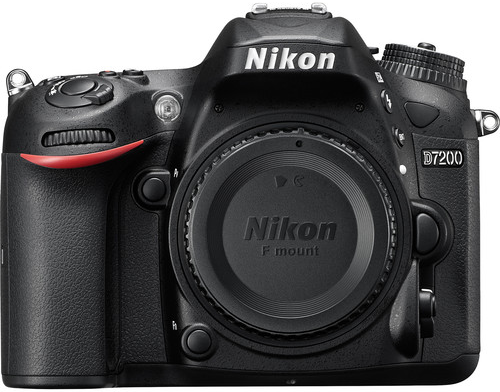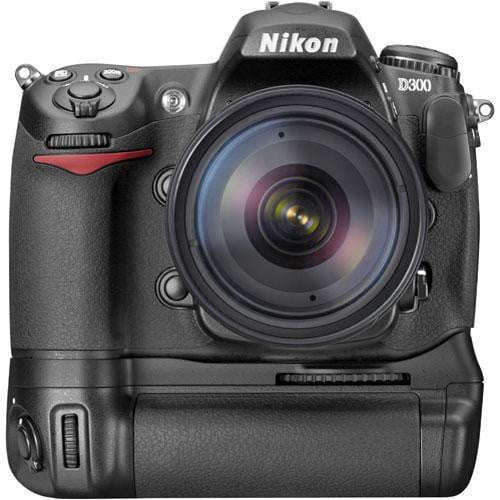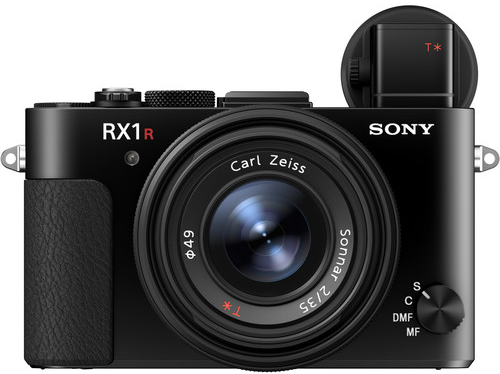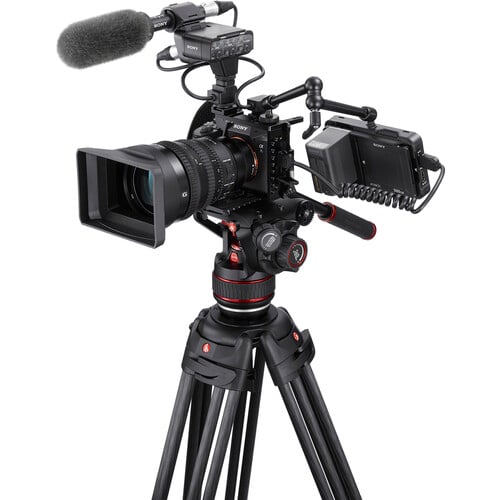These Tips for Wildlife Photography Will Help You Get Breathtaking Results
- Tips for Wildlife Photography: Invest in the Right Equipment
- Tips for Wildlife Photography: Research and Plan
- Tips for Wildlife Photography: Use the Correct Camera Settings
- Tips for Wildlife Photography: Patience is a Virtue
- Tips for Wildlife Photography: Take a Photo Tour With Experienced Guides
- More Wildlife Photography Tips
- Recommended Photography Gear
- What is the Best Camera for Landscape and Wildlife Photography?
- Basic Wildlife Photography Gear List
- Learn composition rules (and know when to ignore them)
- Experiment with different angles and lighting
- Get an underwater housing for your camera or a waterproof camera
- Take a wildlife photography course
- Respect the environment & follow the “Leave No Trace” Principles
- Practice, practice, practice & have fun!
- Capturing the Perfect Shot: How to Choose the Right Photography Tour
- Try This Landscape Photography Technique for Much-Improved Results
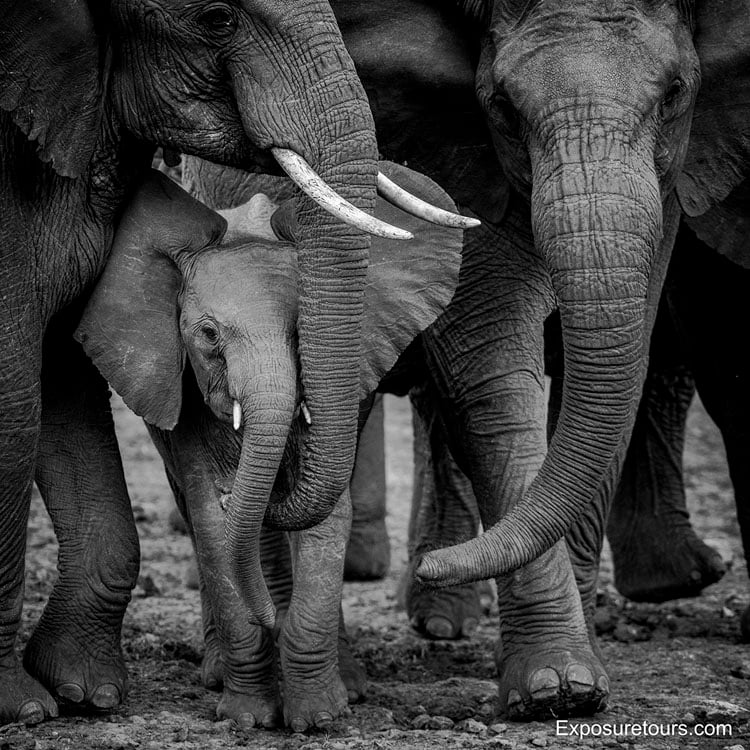
Photo courtesy of Exposure Tours
Capturing high-quality images of wildlife in its natural habitat is a skill that requires not only technical knowledge but also a deep understanding of the untamed beauty of the animal kingdom. With that in mind, you’ve come to the right place if you are looking to make yourself a better wildlife photographer!
In this article, we'll share a collection of tips for wildlife photography designed to help you achieve breathtaking results. From owning the right gear and understanding animal behavior to setting up your camera correctly and mastering the art of patience, we guarantee your wildlife pictures will improve after implementing our tips into your photography process.
Furthermore, regardless of whether you are a seasoned vet with years of experience or a beginner photographer, you’ll find loads of useful information below. Okay, what are we waiting for? It’s time to dive in and discover our top five tips for wildlife photography!
Check out the video above by Roie Galitz to learn how to get started in wildlife photography, essential tips for beginners, and more.
Table of Contents
Tips for Wildlife Photography: Invest in the Right Equipment
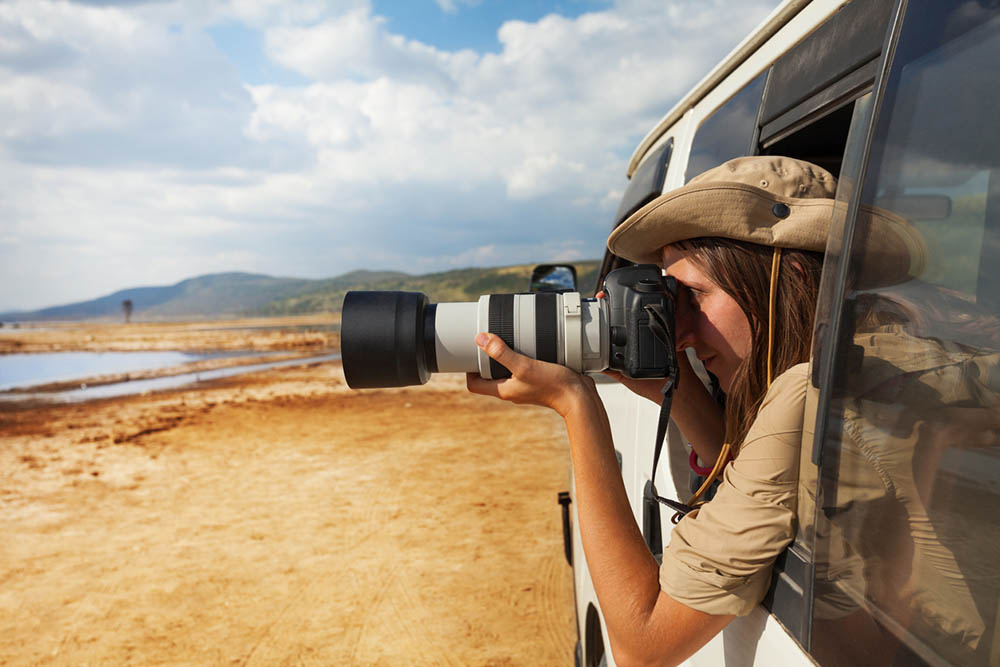
Photo by SerrNovik via iStock
Before doing anything else, you must have a good camera kit for wildlife photography. That means investing in the right camera and lenses. Three features to look for in a wildlife photography camera are fast burst shooting, responsive autofocus, and an environmentally sealed body.
Two mirrorless cameras that immediately come to mind are the all-new Sony a9 III (for professionals) and the Olympus OM-D E-M1X (for beginners). In terms of lenses, telephoto lenses offer the best focal length for wildlife photography.
Other functional wildlife photography gear includes a sturdy tripod, a comfortable camera backpack, binoculars, spare memory cards/batteries, and rain protection.
Tips for Wildlife Photography: Research and Plan
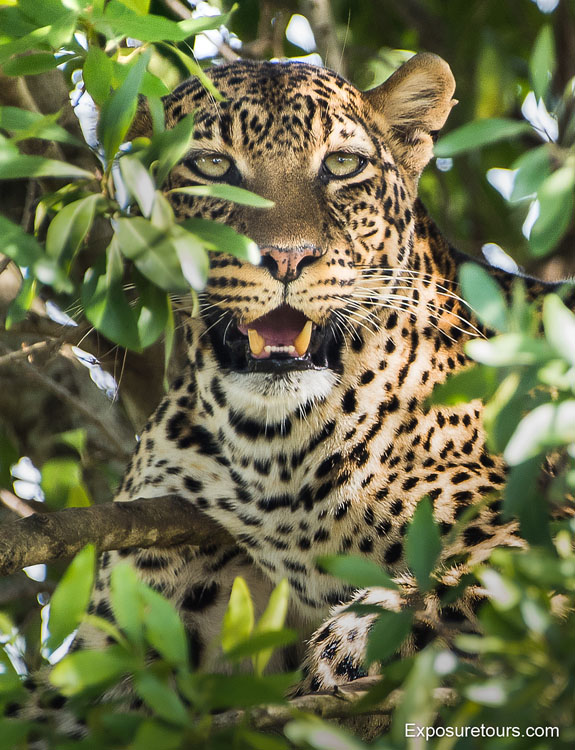
Photo courtesy of Exposure Tours
Just like you wouldn’t sign up for a marathon without training for it, you have to research and plan if you want to be successful at wildlife photography. The first step is learning about the area and the animals you plan to capture. Knowing the time of year animals are most active, where they like to go, and their behavioral patterns will give you a better chance of encountering them.
Talking to people with local knowledge is an excellent way to educate yourself before heading into nature. Alternatively, the internet is an endless fountain of information where you can find anything you want. Creating a detailed shot list, location scouting (if possible), and checking the weather are other ways to prepare for wildlife photography.
Learn More:
Tips for Wildlife Photography: Use the Correct Camera Settings
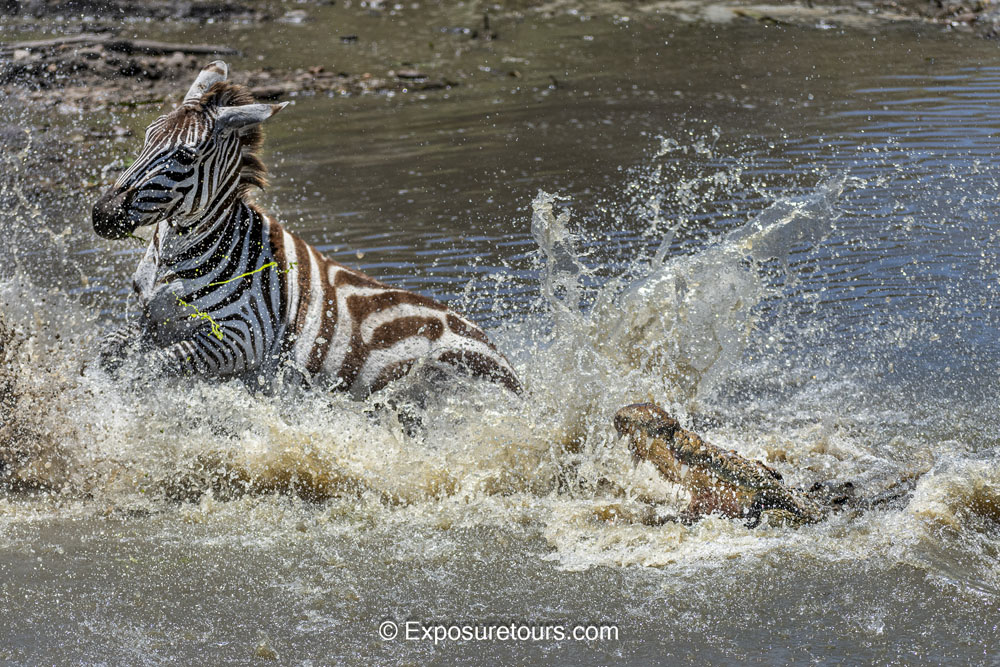
Photo courtesy of Exposure Tours
Now that you have the right gear and a solid plan, it’s time to select the best settings for wildlife photography. If you are a beginner, you will see the best results using “Aperture Priority” mode and setting a wide aperture.
Conversely, more experienced photographers should use “Manual.” When shooting Manual, the best combination is a high shutter speed, wide aperture, and low/medium ISO. However, depending on the lighting, you may need to play around with the ISO or use ND filters.
Additionally, since animal movements are unpredictable, both beginners and pros should almost always use autofocus. It will allow you to consistently capture the sharpest, most in-focus images of animals, birds, etc.
Tips for Wildlife Photography: Patience is a Virtue
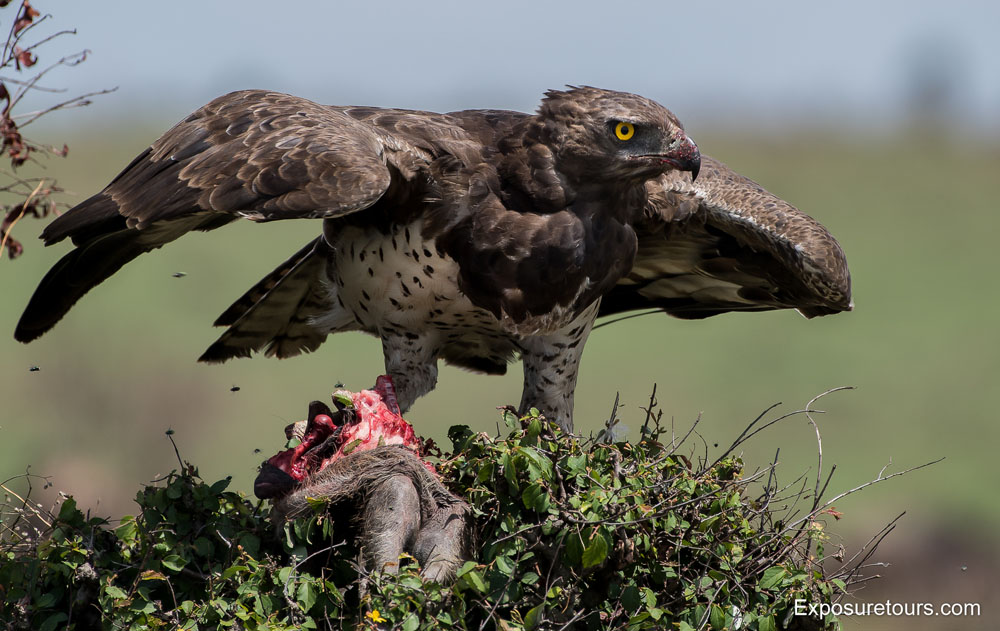
Photo courtesy of Exposure Tours
Unlike mountains and deserts that have been static for millions of years before we existed and will remain that way for millions more after we are gone, animals are always on the move. This makes them elusive subjects that can be notoriously difficult to photograph.
So, if you expect to be able to go out and take the perfect wildlife photo on your first try, I’m afraid you are sadly mistaken. That’s why being patient is a must for any aspiring wildlife photographer.
And if you are serious about getting breathtaking results, you will also need to get comfortable with long periods of silence and solidarity.
Tips for Wildlife Photography: Take a Photo Tour With Experienced Guides
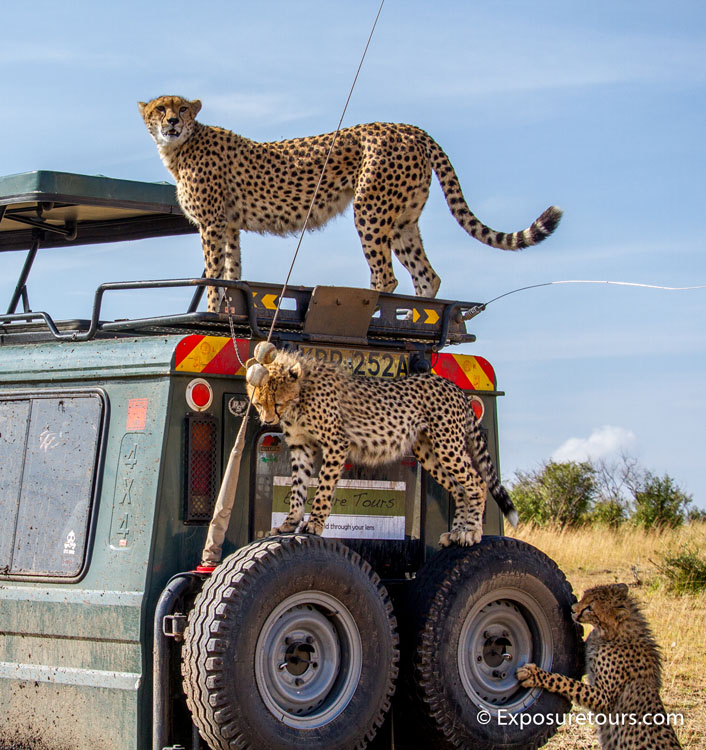
Photo courtesy of Exposure Tours
Finally, why not go on a dedicated wildlife photography tour? They are great ways to experience unknown landscapes, get local guidance, and create lifelong friendships, all while taking amazing photos.
Also, in many cases, it’s easier and safer to go with a tour group, depending on where you are going. One of those places is a dream destination for many wildlife lovers: the safaris of Africa. There are tons of organized photo safaris available today, but one that stands out from the crowd is this 9-day Serengeti Group Safari by Exposure Tours.
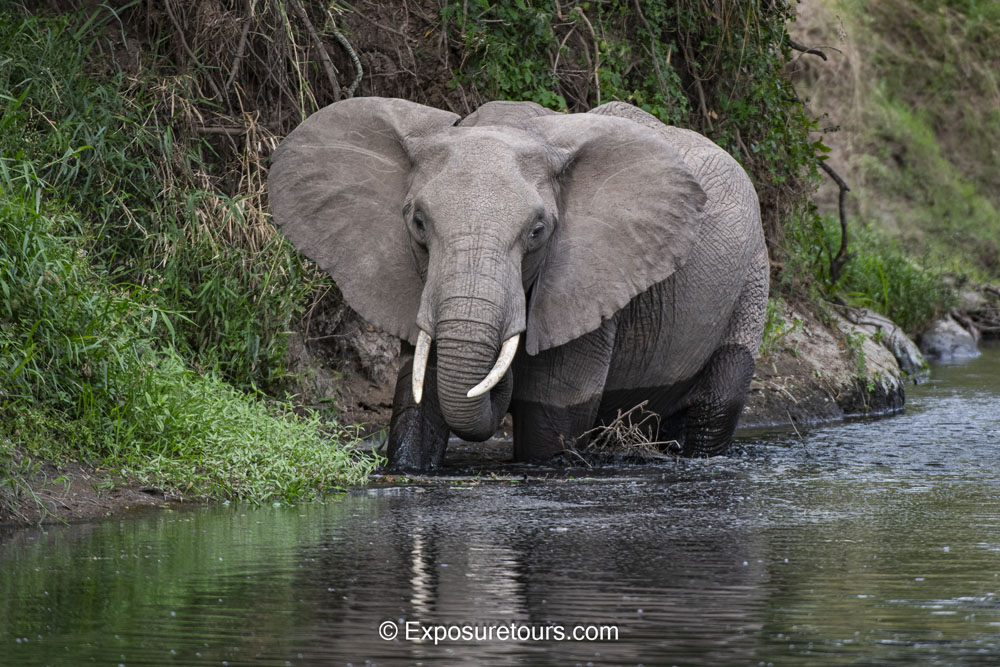
Photo courtesy of Exposure Tours
Why go with Exposure Tours? They’ve been running trips for over 30 years and have a wealth of experience in this region. Moreover, their tour overlaps with the “Great Migration,” so you can expect to see almost all the most famous African animals. They also offer a Big Cat Photo Safari, Birding/Rhino Trips, Tours of Nairobi National Park, and Solo/Family Packages.
Plus, you’ll be treated to small group trips, typically with no more than six people. What’s more, you’ll enjoy extra room in your safari vehicle - unlike other tour companies that cram four or more photographers into one vehicle, Exposure Tours limits it to just two photographers, giving you more room for you and your gear and unobstructed 360-degree views of the surroundings. Nice!
More Wildlife Photography Tips
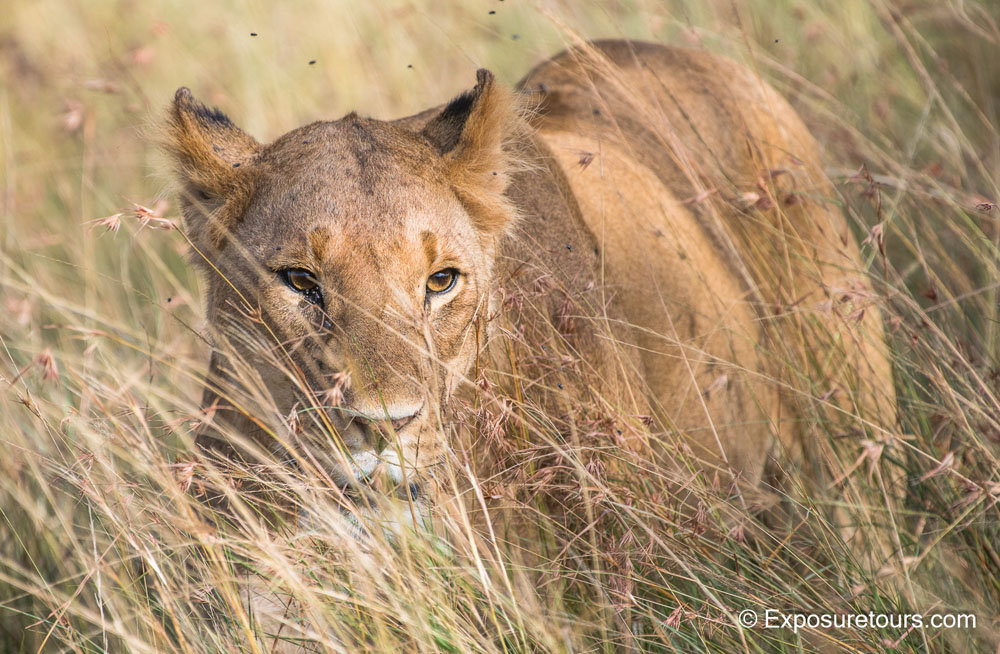
Photo courtesy of Exposure Tours
Thanks for taking the time to read this wildlife photography guide. We hope you have found it useful and informative. Now, it’s up to you to go out and put what you’ve learned into practice. Only then will you start to see actual improvements in your images!
As a farewell gift, here’s a list of more tips for wildlife photography that will help you get breathtaking results:
Recommended Photography Gear
Disclaimer: Our articles might have affiliate links and the occasional sponsored content, but don't sweat it – if you buy something, we get a little kickback at no extra cost to you, and we only hype products we truly believe in!

